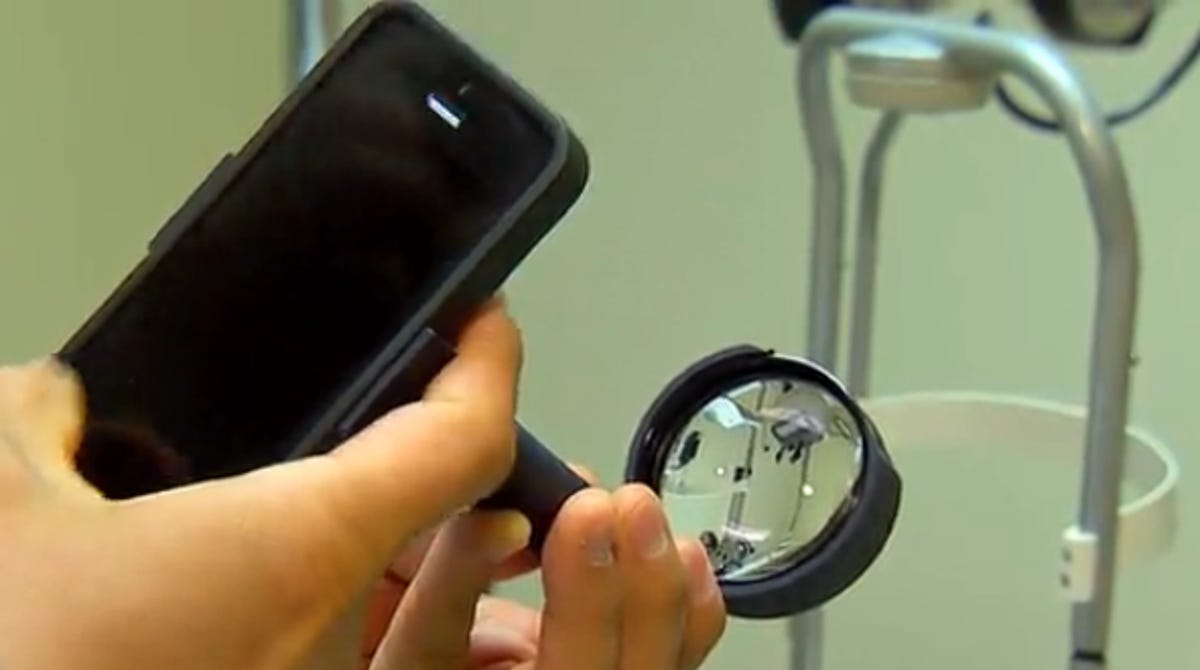
CNET
Over the past year, a small team of researchers at Stanford University has been tinkering with iPhones, Legos, and 3D printers. Their efforts have resulted in a new device that has the potential to prevent blindness in millions of people.
Called the EyeGo, the inexpensive device is an adapter that attaches to an iPhone and in some ways performs the work of much more sophisticated medical equipment.
“The EyeGo is helping someone who is taking the picture to do what we call a portable slit lamp — getting a picture of the front of the eye, the cornea, seeing the lens of the eye,” explains Robert Chang, assistant professor of ophthalmology at Stanford University. “It also helps you take pictures of the fundus which is the retina or the inside lining of the back of the eye.”
The CNET News team visited the Byers Eye Institute at Stanford to see the EyeGo in action.


Now playing:
Watch this:
How the iPhone is zooming in on eye care
2:20
Chang and his fellow researchers imagine that the technology could be used to diagnose eye disease, particularly in areas where eye care is not readily available.
“We feel in developing nations where they don’t have the expensive cameras [and] specialists might be located a few hundred miles away, you would be able to have the local technician or somebody take the picture because our system is set up to be very easy to capture that picture and then sent over the Internet securely,” Chang said.
Images taken using an iPhone and the EyeGo are sharp enough to allow a physician to determine whether the patient needs immediate care.
“We are not attempting to replace gold standard instruments,” Chang said. “We are just facilitating the people to improve access to care and the speed at which the get the care they need.”
Could the EyeGo eventually become so simple to use that an individual could snap images of their eyes themselves without assistance? Chang says that kind of “retinal selfie” would be the holy grail. It may happen eventually, but they’re not there yet.



